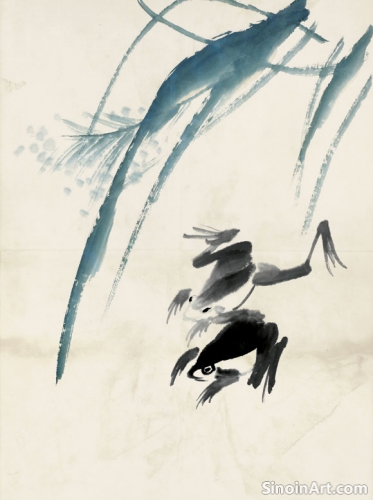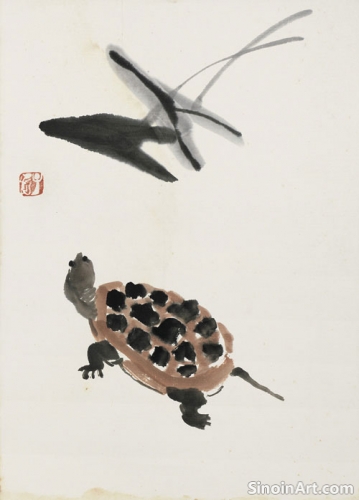The Essence of Xieyi: Capturing the Spirit
|
Xieyi, often translated as "freehand" or "sketching ideas," is a core technique in Chinese ink wash painting that emphasizes the expression of the artist's spirit and emotions over the accurate depiction of reality. Unlike the meticulous "gongbi" style, Xieyi embraces spontaneity and suggestion, using simplified forms and bold brushstrokes to convey the essence of a subject. This approach allows the artist to engage with the natural world and express a deep personal understanding through the language of ink and water. The results are often evocative and imbued with a sense of vitality.  The beauty of Xieyi lies in its ability to distill a subject to its most fundamental elements. A few swift strokes of the brush can represent a bamboo grove swaying in the wind, the powerful form of a mountain, or the graceful movement of a bird. This economy of line and form demands a profound understanding of the subject, forcing the artist to look beyond the superficial and to connect with its inner life. It’s not about photorealism but about capturing the 'qi' or vital energy.  Central to the practice of Xieyi is the concept of "calligraphic brushwork." The same techniques used in writing Chinese characters are employed in painting, with variations in speed, pressure, and ink load creating a myriad of expressive effects. From the dry, scratchy strokes that evoke withered branches to the fluid, wet washes that suggest mist-shrouded landscapes, each mark carries a weight of meaning and contributes to the overall impact of the work.  The use of negative space is also paramount in Xieyi. The areas left blank are not empty; they are vital to the composition, suggesting atmosphere, distance, and movement. They contribute to the sense of dynamism and allow the viewer to actively engage with the artwork, filling in the gaps with their own imagination and experience. It's this interplay between ink and void that gives Xieyi its distinctive ethereal quality. Xieyi painting is more than just a visual art form; it's a spiritual practice. Through the process of creation, the artist seeks to understand the interconnectedness of all things and to harmonize with the rhythms of nature. The act of painting becomes a form of meditation, allowing the artist to express their inner landscape while simultaneously connecting to the broader universe. It’s a beautiful testament to the power of suggestion and the magic held in simplicity. |
Tag : Chinese Xieyi painting, freehand ink wash, calligraphic brushwork, spirit of art, Chinese art techniques
Related information
- The Importance of Practice in Xieyi
- The Enduring Appeal of Xieyi Painting
- Exploring the Subject of Flowers in Xieyi
- Xieyi Painting and the Concept of "Jing Jie"
- The Influence of Zen Buddhism on Xieyi Painting
Dedicated and consistent practice is essential for mastering Xieyi painting, developing technical skills, intuition, and spontaneity, while also fostering patience, perseverance, and a deeper understanding of the art form's philosophy and aesthetics, transforming the practice into a form of self-discovery.
The enduring appeal of Xieyi painting stems from its emotional and intuitive power, achieved through personal expression, spontaneity, suggestive imagery, and the pursuit of essence, connecting with viewers across cultures, and inspiring contemplation, tradition, and a deep understanding of the human experience.
Flowers are a popular subject in Xieyi painting, imbued with symbolism and conveying a range of emotions. Artists focus on capturing the essential nature and vital energy of flowers through suggestive brushstrokes and subtle color washes, creating a meditative appreciation of nature's beauty.
"Jing Jie" (realm) in Xieyi refers to the artist's pursuit of spiritual enlightenment, transcending technical skill to achieve a deeper understanding of themselves, their subject, and the universe, emphasizing intuition, spontaneity, and interconnectedness as they strive for artistic and spiritual transformation.
Zen Buddhism has had a significant influence on the philosophy and practice of Xieyi painting. Zen’s emphasis on mindfulness, spontaneity, and direct experience resonates deeply with the core principles of Xieyi art. The relationship between Zen and Xieyi art is profound and ongoing.